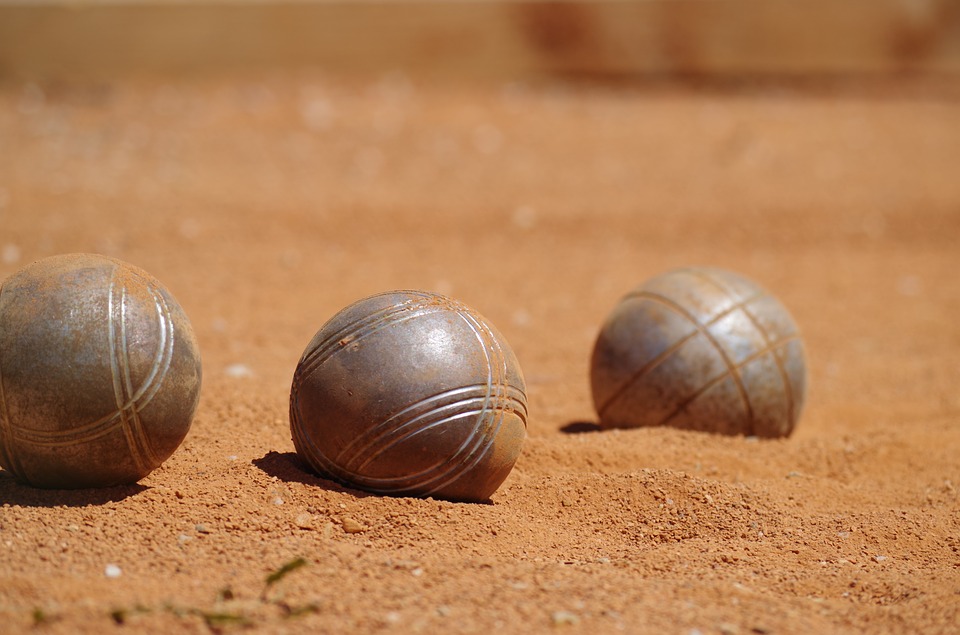
France, like most countries of the world, seems to have a fascination with le football (soccer). Football has legions of fans throughout France but there is another game that is nearly as popular and that appeals to people of all ages. Pétanque (pronounced pay-tonk), commonly referred to as le jeu de boules (the game of balls), is a characteristically French game with roots in ancient history. Similar to horseshoes and bocce ball, the game requires precision, finesse and a great deal of concentration that may not be apparent if you’re simply un spectateur (a spectator).
Although typically associated with older French men wearing berets, the popularity of pétanque has transcended generational and national boundaries to become a global sport with biennial international competitions organized by the Fédération International de Pétanque et Jeu Provençal (International Federation of Pétanque and Provençal Game). Unlike most sports, pétanque is a game that requires virtually no strength, speed or dexterity. There are even pétanque competitions for people in fauteuils roulants (wheelchairs).
A form of pétanque using stone balls originated in ancient Greece around the 6th century B.C. The Romans took up the game and began using wooden balls instead. Pétanque increased in popularity during the Middle Ages and up through the 19th century in Western Europe. This early style of pétanque required running and was thus reserved for those who were generally en bonne forme (physically fit). In the Provence region of France in the early 20th century, the rules of the game were slightly altered to accommodate an aging player who could no longer run because of Rheumatoid Arthritis. Thus was born the modern form of pétanque requiring les joueurs (the players) to throw the ball from a stationary position. The word pétanque is a derivative of the words ped tanco, meaning planted/anchored/fixed feet in the Provençal dialect. Provence continues to be the pétanque mecca of the world and should you ever visit the region, you will undoubtedly encounter a group of older men playing the game in any of the small villages or towns.
Today the game is usually played on a flat surface that allows the balls to roll freely. Pétanque balls are made of creux (hollow) metal and weigh anywhere between 650 to 800 grams. Le cochonnet (the jack—in French cochonnet means piglet) is a small wooden ball used as la cible (the target), similar to the stake in horseshoes.
In the next post we’ll be looking at the rules of pétanque.





